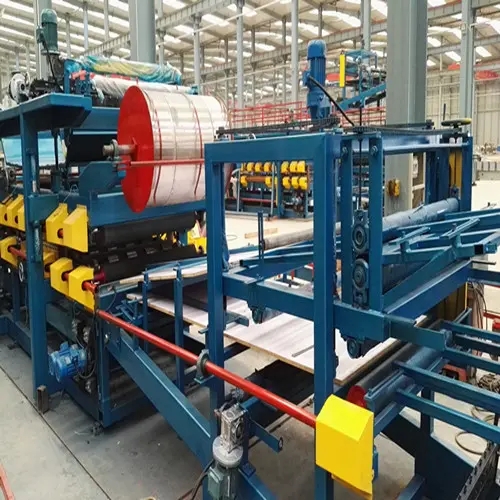
Cold roll forming is a highly efficient, precise manufacturing process used to shape metal into various profiles and components. This process involves the incremental deformation of metal strips or sheets at room temperature, leading to a final product that exhibits enhanced mechanical properties and a superior surface finish. Unlike hot rolling, which requires heating the metal to high temperatures, cold roll forming utilizes the properties of metal in its 'cold' state, making it suitable for a wide range of applications across different industries.
One of the key advantages of cold roll forming is its ability to produce complex shapes and dimensions with remarkable consistency and accuracy. The technique begins by feeding a metal strip, typically made from steel or other alloy materials, through a series of specially designed rollers. These rollers gradually reshape the metal into the desired profile by applying specific forces at predetermined angles. This careful control allows manufacturers to create intricate geometries, including channels, angles, and tubular sections, with tight tolerances.
Moreover, cold roll forming not only achieves high precision but also enhances the strength of the material. The cold working process induces strain hardening in the metal, improving its yield and tensile strength significantly. As a result, components produced through cold roll forming can often be made thinner and lighter without compromising performance integrity. This is particularly advantageous in industries such as automotive and construction, where reducing weight can contribute to greater fuel efficiency and lower material costs.
In terms of efficiency, cold roll forming stands out as a cost-effective production method. The process is continuous, meaning that long runs of material can be produced quickly without the need for excessive downtime. Additionally, the minimal amount of waste generated during the shaping process contributes to lower production costs and a reduced environmental impact. Manufacturers can also achieve higher yields, as the material is often used more effectively than in other forming processes, such as stamping or machining.

Cold roll forming is widely adopted in industries such as automotive, construction, HVAC, and furniture manufacturing. For instance, in the automotive sector, many components such as chassis parts, reinforcements, and brackets are made using cold roll forming due to their high strength-to-weight ratio and the complex shapes that can be achieved. Similarly, in construction, cold-formed steel sections are commonly used in the framing of buildings, ensuring robust structural integrity while maintaining cost-effectiveness.
Safety and quality control are critical in the cold roll forming process. Manufacturers often implement rigorous quality assurance protocols to monitor the dimensional accuracy and mechanical properties of the finished products. Advanced technology such as computerized numerical control (CNC) systems can further enhance precision and consistency throughout the production run. By employing real-time monitoring systems, manufacturers can quickly address any deviations in quality, ensuring that each component meets the necessary specifications and standards.
Looking ahead, the future of cold roll forming appears promising, driven by ongoing advancements in manufacturing technologies. Innovations in material science and process automation are likely to enhance the capabilities of cold roll forming, allowing for even more complex and high-performance components to be produced. The industry also anticipates a growing demand for customized solutions, as design trends evolve towards greater flexibility and personalization in various applications.
In conclusion, cold roll forming is a versatile and efficient manufacturing technique that plays a crucial role in the production of high-quality metal components across multiple industries. With its ability to create precise, strong, and lightweight structures, it meets the demands of today’s fast-paced and quality-driven market. As technology continues to advance, the potential for cold roll forming to adapt and innovate will only strengthen its position as a key player in the manufacturing landscape.